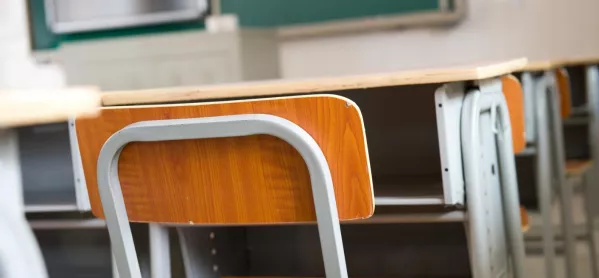GCSEs: Areas with low prior grades ‘lost most learning’

Areas where GCSE results have been lower in the past have seen bigger drops in attendance this term during the Covid-19 pandemic, according to new analysis.
The Education Policy Institute think tank has analysed government data showing how school attendance has been disrupted across different parts of the country this academic year.
For the first time, the Department for Education has published attendance data broken down at regional and local authority level.
Revealed: The areas where schools have been hardest hit by Covid
Absence: New ‘hidden data’ reveals huge attendance gap
GCSEs: Gibb admits there is no data on exam pupil absence
In a report, the EPI says that areas with lower prior GCSE results have seen more days of lost schooling relative to their pre-pandemic levels.
The report states: “Broadly speaking, areas with lower prior GCSE results have seen more days of lost schooling relative to pre-pandemic levels, such as Knowsley, Oldham, Rochdale and Sandwell, where pupils have lost around 10 or more days of face-to-face schooling over the autumn term.”
Coronavirus: Variation in school attendance
But it adds: “However, there are some areas with similar low prior GCSE results where pupils have lost less than four days of schooling, such as the Isle of Wight.”
The researchers also found that areas with higher levels of disadvantage have seen more days of lost schooling per pupil this term, both among primary and secondary schools.
The report says: “Areas experiencing higher levels of disadvantage have also seen greater days of lost schooling per pupil, both amongst primary and secondary schools.”
But this link “is far from perfect”, it says. For example, “the share of pupils eligible for free school meals is similar across Islington and Knowsley, but secondary school pupils in Islington have only lost about four days of face-to-face schooling on average, compared with 10 days in Knowsley”.
The EPI also says that although secondary school attendance has been around 80 per cent on average, there are some areas where it has been significantly lower this term.
Rochdale saw attendance of 71 per cent, while Sandwell and Oldham both saw attendance of 72 per cent.
In the most recent weeks, secondary school attendance has dropped below 40 per cent in some areas. And last week the lowest attendance rate was in Medway, where 53 per cent of pupils were in attendance.
The findings will add to concerns that the pandemic has disproportionately hit schools in disadvantaged areas harder than more affluent ones.
Weaker correlation
However, a separate study by FFT Education Datalab, published today, shows that the correlation between attendance in secondary school and disadvantage has dropped compared with analysis it had carried out in October.
It previously found that the North West of the country was particularly badly affected by pupil absence, and that it was pupils in the poorest areas of the country who were missing the most schooling.
This followed a Tes investigation showing primary schools with the most disadvantaged pupils had only half the attendance rates of those serving the most affluent intakes during lockdown.
But today, FFT said that attendance has tended to fall since October in less disadvantaged areas.
A post by the FFT Education Datalab team and University of Bristol professor Simon Burgess says that, buried within attendance figures for local authorities, there will be some even lower figures for individual schools.
It adds: “There are almost bound to be schools with attendance below 50 per cent. And, taking things one step further, it is very likely that different pupils within those schools have different experiences: some missing even more school than the school average.”
The post also highlights the lack of data by exam year group being collected or published by the DfE.
It adds: “One thing that the figures give no indication of is how things are varying by year group - as a starting point, we would like to know: are Year 11s experiencing a higher level of absence than Year 7s?
“All of this is of great concern, given that pupils will be assessed at the end of their key stage in a way that doesn’t take into account the amount of learning they have lost out on.
“For the pupils in the worst affected parts of the country, that won’t seem very fair at all. And we probably won’t know which will have been the worst affected parts of the country until all this is over.”
FFT Education Datalab is launching a new attendance tracker next year, which will allow schools to monitor their attendance - including the impact of Covid-19 - on a week-by-week basis and compare it with other schools nationally.
You need a Tes subscription to read this article
Subscribe now to read this article and get other subscriber-only content:
- Unlimited access to all Tes magazine content
- Exclusive subscriber-only stories
- Award-winning email newsletters
Already a subscriber? Log in
You need a subscription to read this article
Subscribe now to read this article and get other subscriber-only content, including:
- Unlimited access to all Tes magazine content
- Exclusive subscriber-only stories
- Award-winning email newsletters